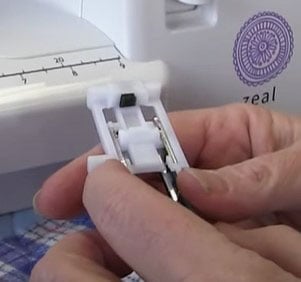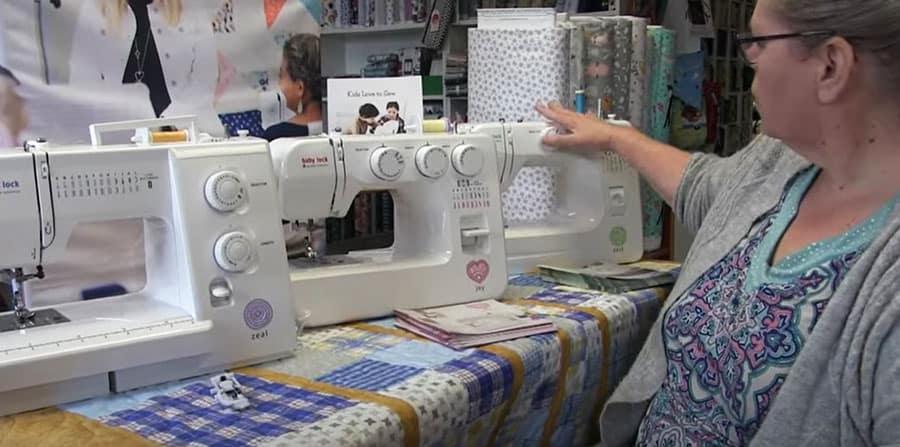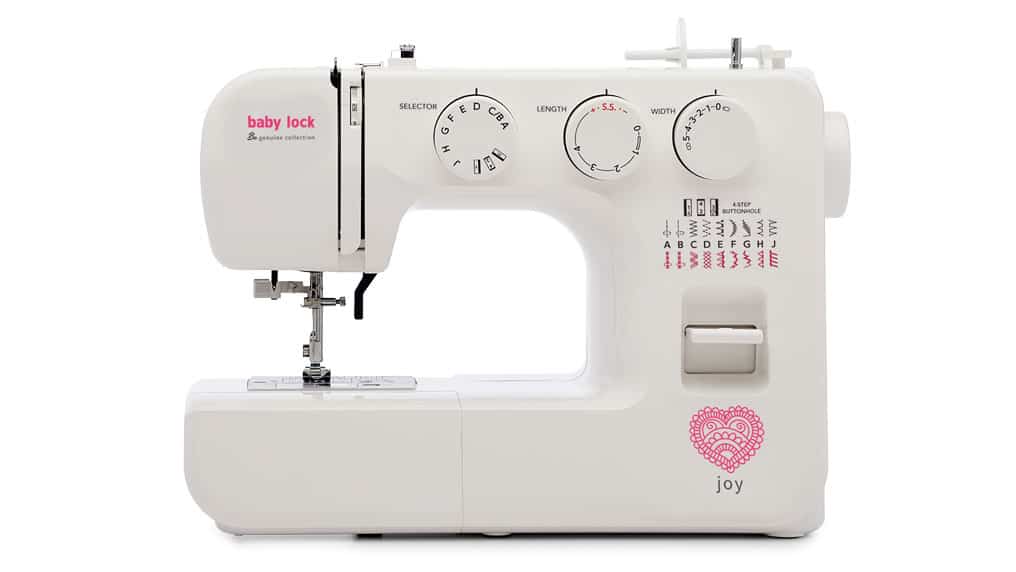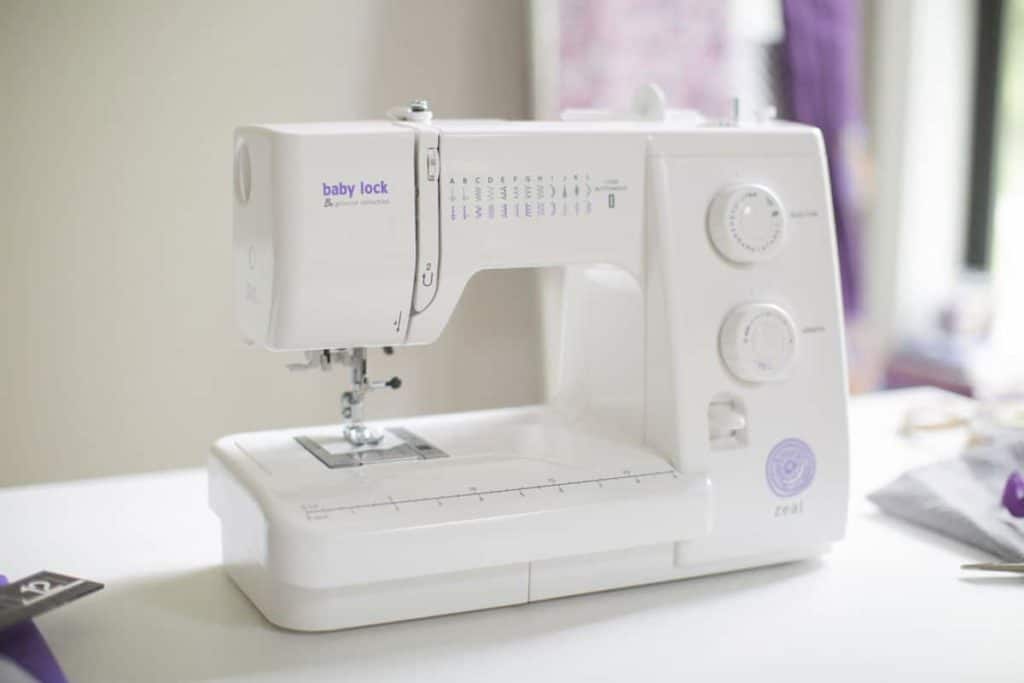Sewing is a wonderful hobby to discover
Since COVID started, we’ve seen a real renaissance in sewing. People who had never sewn before started making masks, and now they’re excited to learn how to sew and make all kinds of things.
Beginning sewists aren’t all the same. If you’re an adult who has recently begun to sew, maybe you borrowed a machine from someone during the pandemic and now it’s time to get your own. Or maybe you’ve recently retired and have decided to take up quilting. Sometimes beginners are children.
Get kids sewing early
When you get a child sewing early enough, it becomes a lifelong passion, something they can get into again throughout their life. Brenda and Kelley both started sewing early.
Kelley: “I sewed early and then stopped during the busy years and then again picked it up again a little bit later. And actually, that’s what I enjoy doing. Go to my happy place”.
Brenda: “Yeah, me too. I must say that that’s exactly what I do. So I started when I was about ten and kind of noodled around a bit. It was just fun and creative”.
Sewing is a great creative hobby because it really gets the left brain going. It’s just excellent for kids to learn how to do this. And that means boys and girls, so don’t just think about your girls. Think about your guys, too. We have lots of gentlemen come in that sew and really enjoy it.
What’s the best sewing machine for beginners?
The key to finding the best machine for any level of experience is to think about what you need in advance, narrow down the models, then get a demonstration to see them in action and make a final choice.
However, if you’re a beginner, you might not have enough experience to know what you need. This article reviews basic sewing machine features.
Be sure to watch the video for specifics, because Kelley talks about a variety of entry-level Baby Lock machines.
If you’re going to sew or repair clothing, or make home decor or bags, on various projects you will be making buttonholes, hemming, and inserting zippers, so even an entry-level machine should give you the ability to do these simple things.
What’s the difference between simple sewing machines for beginners and the more sophisticated ones?
- Number of features
- The way the features are laid out on the machine. For example, front-load vs. top-load bobbin
- The level of automation.
- Variety within a feature. For example, number of stitches available.
- Which feet are included
- Weight of the machine. Starter machines are usually lighter, which is an advantage if you want one that’s portable.
Sewing machine feet
We discuss some basic feet below, but check out some of our other content to find out more about the various sewing machine feet.
Blind hem foot
A blind hem foot helps you make a blind hem, such as the hem that’s on the bottom of your pants or skirt. It’s called a blind hem because you actually can’t see any of the stitches on the outside of the garment. The stitching is on the inside with a little invisible pick stitch that comes through to the outside.
Zipper foot
A zipper foot is a narrower foot that can be placed to the left or the right of the zipper. Without this, you really can’t do a nice job of adding a zipper.
Stitch Choice and Width and Length of Stitch

The more sophisticated a machine is, the more decorative and utility stitches it has to choose from beyond the basic straight stitch, but sewing machines for beginners will still have a good variety that will allow you to do basic sewing tasks and beginner sewing projects.
As you go up the line the width that you can make your stitches increases. The stitch width dial gives you the side to side motion of the needle – think of a zig zag stitch. If you are doing a zig zag with very little stitch length you will have what’s called a satin stitch. The zig zags sew closer together for satin stitch. All of the fancier decorative stitches use stitch width. Most are pre-programmed into the machines – you just pick that one you want on the stitch selection dial.
Buttonhole feature
Some sewing machines manage buttonhole creation.
Four-step buttonhole. You’ll use the stitch dial to select which side of the buttonhole you are sewing and the buttonhole bartack selection to finish the ends of the buttonhole. You’ll need to draw you buttonholes on your fabric accurately to get the right size.
One-step buttonhole. The machine does it for you once you set it up with the correct sized button inserted into the foot.

Reverse button
All sewing machines have a reverse feature that lets you sew backwards. On some machines, you need to stop sewing, activate the reverse, then start again.
Many, if not most modern machines, allow you to reverse without stopping. All the machines we sell have this feature.
Tension adjustment
Depending upon what fabrics you are sewing and which weight of thread you are using, you’ll want to adjust the tension dial.

The tension dial adjusts the tension of the thread. If you’re doing decorative things where you have thicker thread or you are using heavier fabric, you can adjust the tension to get the perfect stitch.
It’s just a matter of checking and then adjusting the tension, either tighter or looser, depending on what you need to do. If the tension is too tight, the thread might snap. If it’s too loose, the thread gets loopy.
Pressure Foot Dial
This dial allows you to adjust how much pressure is put on the fabric. It doesn’t come with every machine.
Needle threader
The older you get, the more you appreciate an automatic needle threader. It hooks into the needle and pulls the thread through.
Bobbins
Keep in mind bobbins from different machines are not interchangeable. Use the ones you are given and buy more of that brand and size when needed.
Most of our Baby Lock sewing machines use a plastic bobbin. But some machines take different sizes. The big quilting machines use a larger metal bobbin. You can also buy pre-wound paper bobbins for various machines. Sometimes you’ll need to use a little plastic disc included with your machine to add to the depth of the paper bobbin in the bobbin case. Check with your sewing machine dealer or your manual when buying paper bobbins to make sure they will fit.
Some machines have a front-load bobbin, such as Zest, our basic starter machine. This requires you to pull the free arm accessory off in order to put in the bobbin.
All the other machines we carry have a top-load bobbin. This has some advantages.
- You can see how much thread you have on your bobbin before you run out. You can’t see this with the front load system.
- It’s easier to see how the bobbin goes in so threading is simpler. You just drop the bobbin in the top, follow the channel and there’s a little hook to snap it into. You put on the cover and that’s it. You’re done.
- You don’t have to take your machine apart to put your bobbin in.
- They are a little more jam-proof. You’re less likely to have the thread get sucked back down through the needle when you’re starting off your stitch. That kind of messiness is called a ‘birds nest’.
Feed dogs
Feed dogs are the little grippy things that move back and forth, right underneath the presser foot on the base of the sewing machine. They pull the fabric forward or in reverse, depending on how you have the machine set.

All machines that sew decorative stitches and that sort of thing have feed dogs, which means that almost every sewing machine has them. Machines specifically made for quilting don’t have them.
To do free-motion quilting on a sewing machine, you should drop your feed dogs or cover them so you can push your fabric around without it catching. There is a special foot required for this and it’s not included with entry-level machines. These can be special ordered though.
Why buy quality
Sewing machines are available in a range of prices and quality levels. While budget is one consideration, quality is also really important. Find the balance between what you can afford and what will serve you for many years.
Why should you buy from a sewing machine specialist rather than a big box store?
Dealer support. We show you how to operate the machine and you have basically unlimited free lessons on how to operate your machine. For a beginner, that’s a big deal.
Some of the machines sold at big box stores are basically throw-away models. When they break, you throw them away. The repairs cost more than the value of the machine. They’re not really fixable from a monetary standpoint. We hear a lot of sad stories about the quality (or lack thereof) of some sewing machines.
So while that cheap machine seems like a bargain, and it sounds like it can do everything but sing and dance, if you have to replace it in two years, (often it’s two months) or it’s not operating properly, how much of a bargain was it, really?
Baby Lock machines are high quality

Why we like them
Baby Lock machines are dependable, well built, and carry a real guarantee: 25-year limited manufacturer’s warranty, 10-year parts, 2-year electrical and 1-year labour. And you always have dealer support to fall back on. Using them is simple and intuitive. Baby Lock listens to what the professionals are asking for in a sewing machine and they incorporate those ideas into their machines. Baby Lock sewing machines have been endorsed by some of the biggest names in sewing, such as Eleanor Burns, Pat Sloan and Nancy Zieman.
Some Baby Lock sewing machines for beginners, including starter machines Zest and Joy, have a buttonhole feature and come with a blind hem foot, zig zag and a zipper foot. The Zeal comes with 6 feet, the automatic buttonhole, button fitting, overedge, zipper, blind hem, and general purpose foot.
Baby Lock starter machine prices start just over $200, but it doesn’t matter what price range you’re in, we’ve got lessons with all of them.
Baby Lock sewing machines come with 60 days of video classes, so you can go online any time of the day or night and see what other people are doing with their machines, watch a lesson and find out some of the basics there, too. That’s in addition to our support here at ABQ Sewing Studio.
ABQ Sewing Studio bonus
Watch to the end of the video to find out about our special bonus for those who purchase in person from ABQ Sewing Studio.
Threading Baby Lock machines
All the BabyLock machines have an easy-to-follow numbered system that tells you where to put your thread when you’re threading your machine. 1-2-3-4, follow the lines. Same thing with the bobbin on all the bobbin covers. It shows you the way to put the thread through.
Baby Lock sewing machines for beginners
Baby Lock Zest

Zest is a great entry-level sewing machine for beginners and children. It’s lightweight and simple to operate, with a nice big reverse button that you can use on the fly. No need to stop to reverse. Plus, it’s hardy enough to hem denim.
Other things to know about Zest
- Front-load bobbin
- 15 built-in stitches
- Feed dog cover (not a drop)
- Manual needle thread
- Large reverse button
- Four-step buttonhole
- Free-arm sewing
Baby Lock Joy

Joy is good for anyone who wants a lightweight secondary machine to take on retreats, classes, or other travels.
If you plan on sewing jersey material or other knit fabric, such as for T-shirts or stretchy scrunchies, this machine has a good selection of stretch stitches, more than Zest. Although these are considered stretched stitches, you can also use them as decorative stitches showing them off on regular fabric.
- Top-load bobbin
- 19 built-in stitches
- Thread cutter
- Needle threader
- Large reverse button
- Four-step buttonhole
- Feed dog drop
- Free-arm sewing
Baby Lock Zeal

Zeal has a different look and a few more features, such as the ability to adjust the pressure on the foot, and more stitches. It has some decorative stitches and more stretch stitches to choose from. This is also the first one in the line that gives you a one-step buttonhole.
With a one-step buttonhole, the machine actually makes the buttonhole to the size of your button, all in one step instead of four steps.
No more making a mess of your buttonholes because the machine did something weird or you did something weird. This is just a nice guarantee of success.
- One-step buttonhole
- 25 built-in stitches
- Twin needle sewing
- Needle threader
- Thread cutter
- Feed dog drop
- Pressure dial adjustment
- Free-arm sewing
Sewing Machines at ABQ
We’ve discussed the three Baby Lock sewing machines for beginners. They are available for purchase at ABQ Sewing Studio or online. You get an extra bonus if you purchase at our Strathroy store.
Here’s where you can find information about all the sewing machines we carry. Some are available for purchase only in our Strathroy store, while others are available online.
Leave a Reply